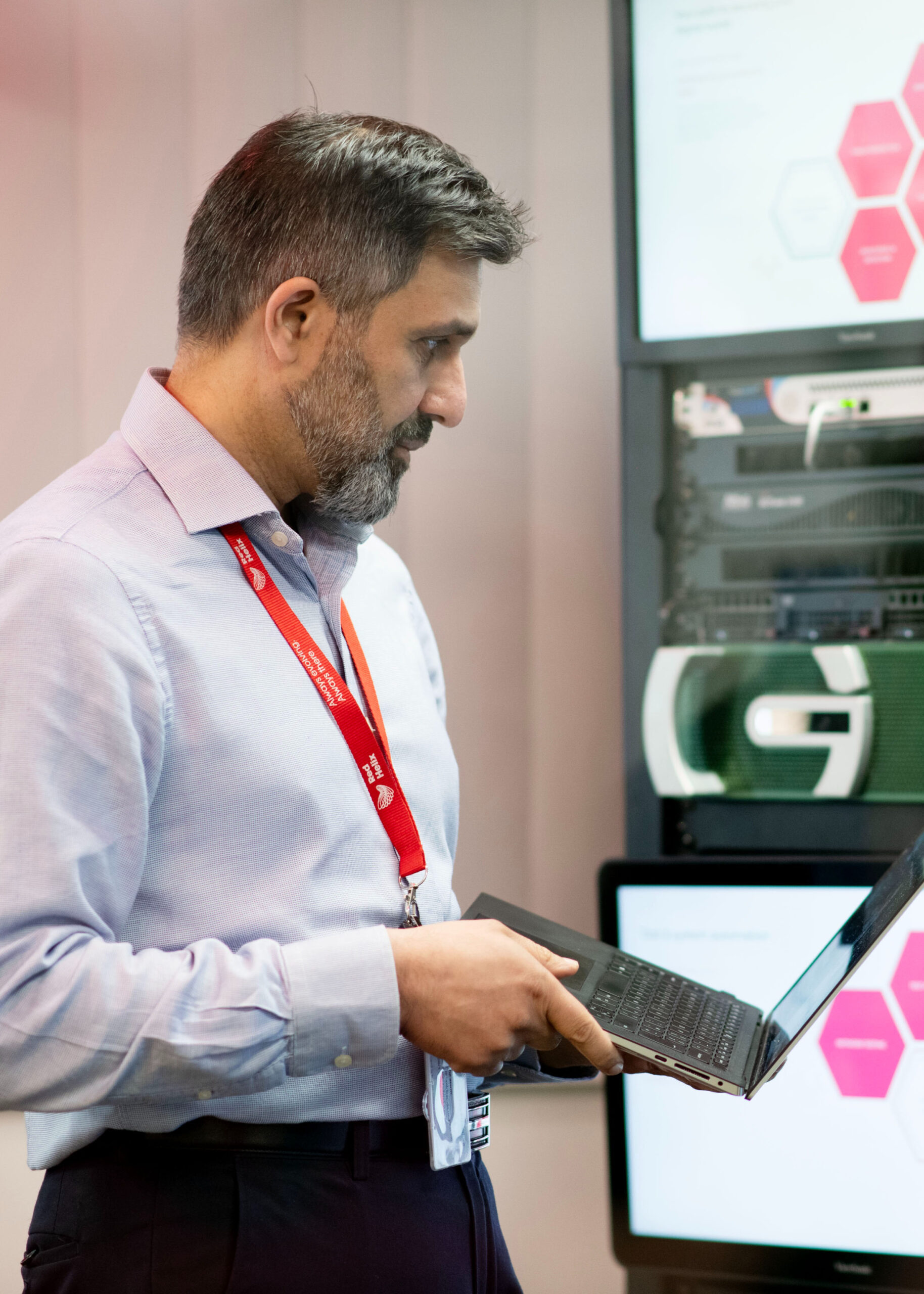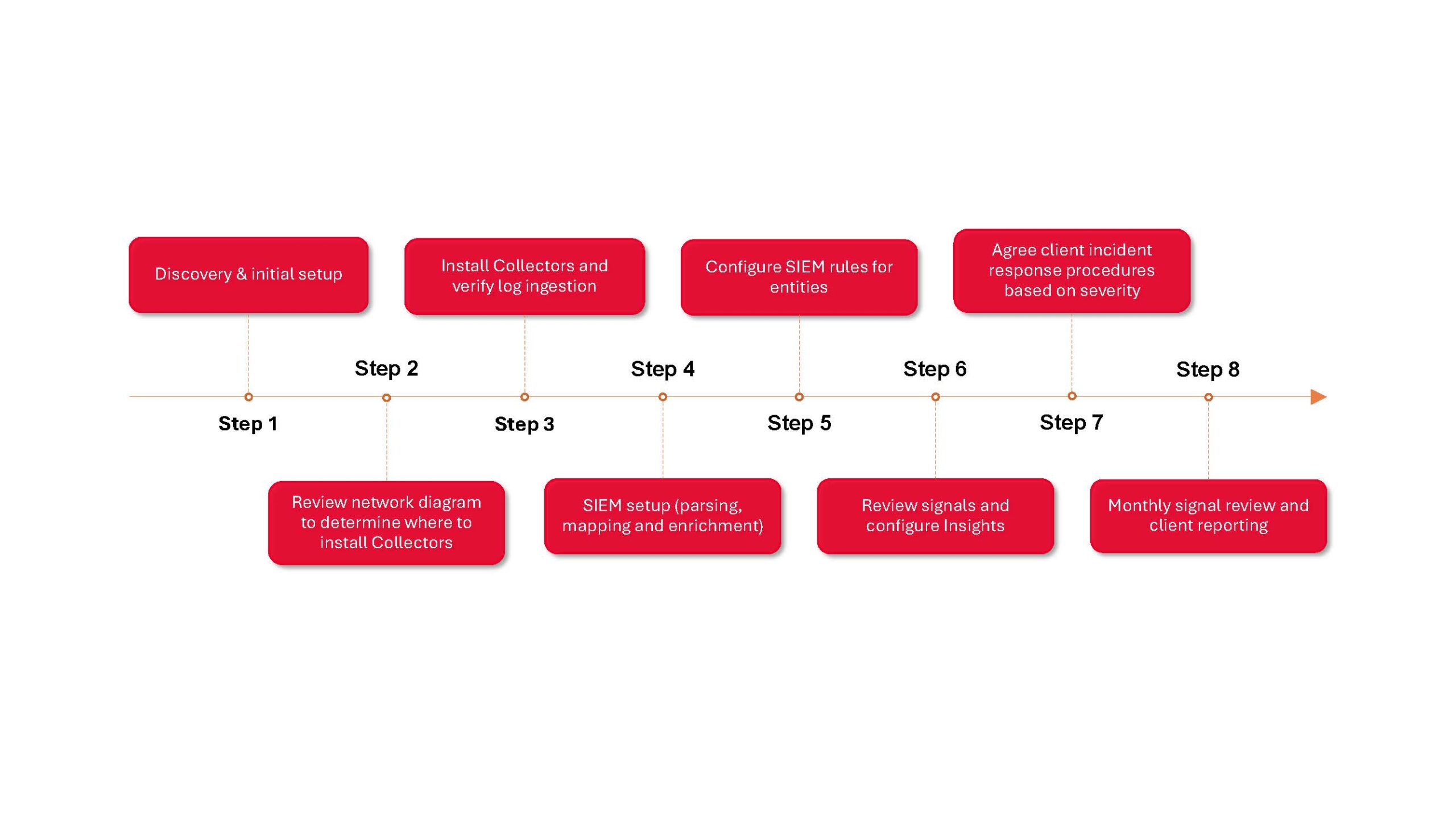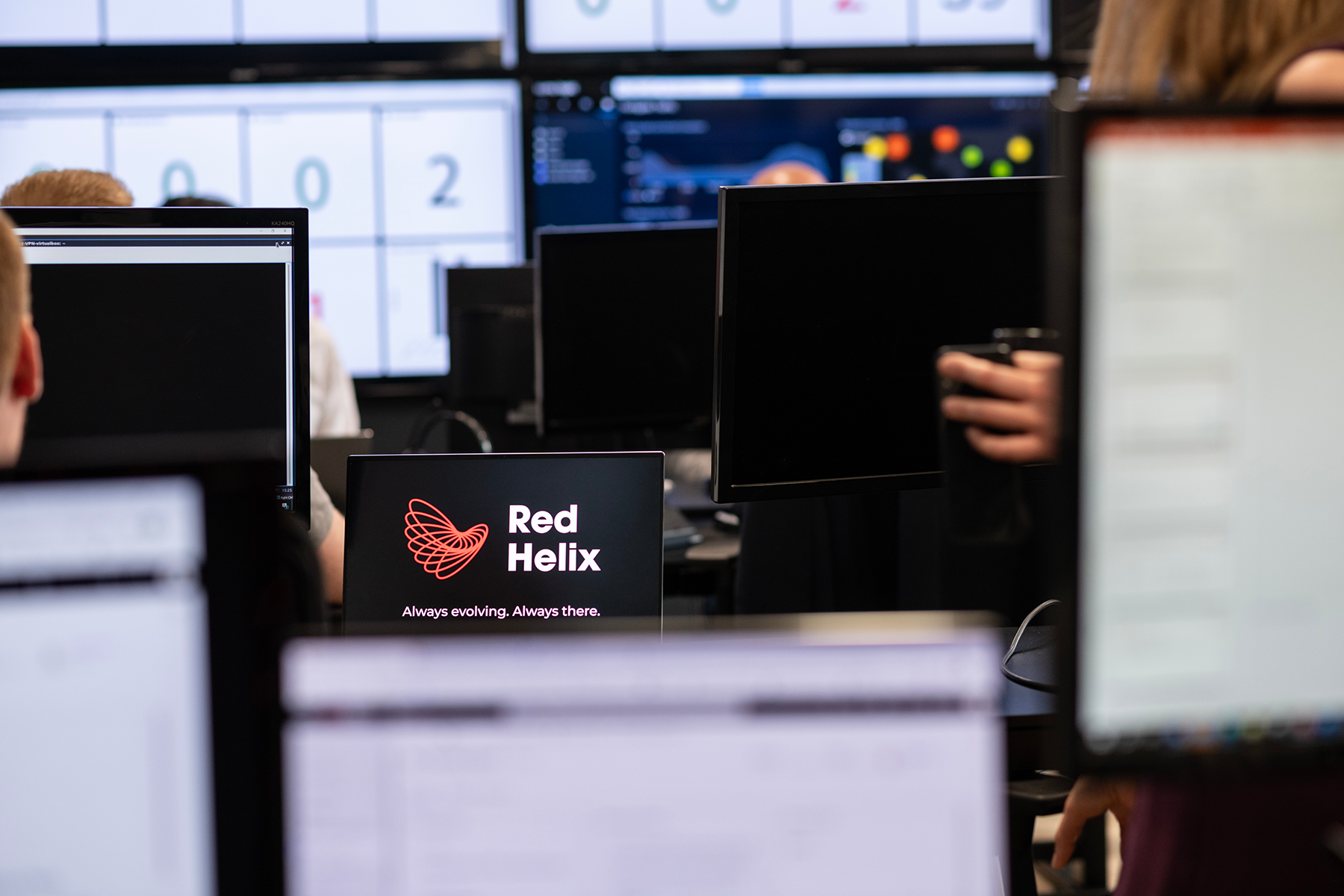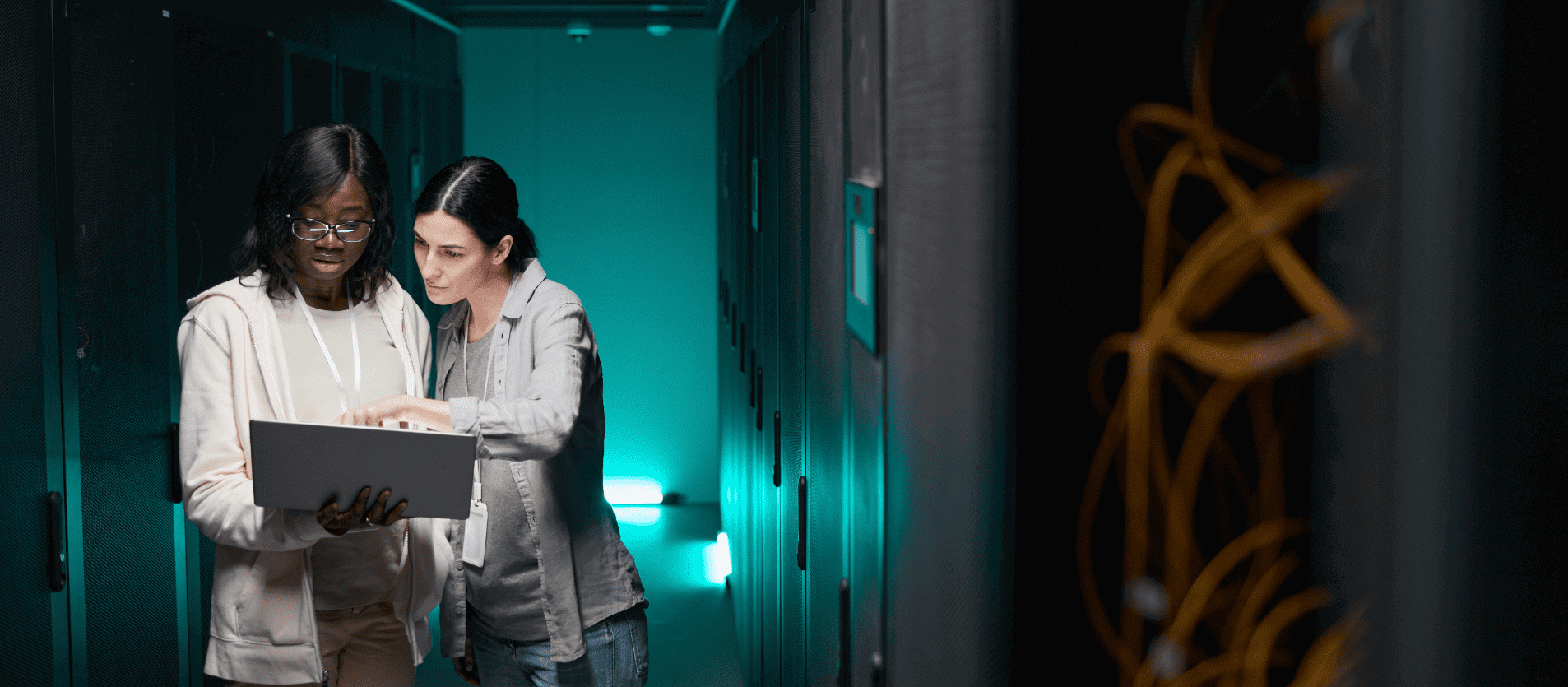Security Information and Event Management (SIEM)
Real-time security monitoring with flexible service levels


Whether you require foundational threat monitoring, extended log retention, or advanced threat protection, we tailor our SIEM solutions to fit your IT security strategy.
At Red Helix, we help businesses determine the right SIEM strategy based on their specific needs. Whether you need enterprise-wide log analytics and compliance monitoring with Sumo Logic or advanced endpoint threat detection with CrowdStrike, our team ensures seamless integration and expert management. Investing in the right SIEM solution improves security efficiency, reduces operational costs, and enhances overall resilience against evolving cyber threats.
For SMBs, opting for a managed SIEM is a great option. SIEM enables SMBs to streamline threat detection, incident response, and compliance management processes via a unified log management system. This ensures complete visibility into their networks with maximum ease of use. Often smaller and medium sized businesses do not have the resources or budget to spend on employing and managing an in-house Security Operations Centre (SOC). A managed SIEM therefore provides a cost-effective, scalable solution and enhances capabilities without requiring an in-house security team. Managed SIEM bridges the gap, providing enterprise grade protection at an affordable cost.
Not sure which SIEM fits your organisation best? Contact us today for a consultation, and we’ll help you make an informed decision based on your infrastructure, security needs, and compliance requirements.
| SIEM | Traditional Security Services (Log Management, IDP/IPS) |
|---|---|
| Aggregates data from various security tools, network devices, applications, and operating systems | Focuses on specific data sources like network traffic (IDS/IPS) or system logs (Log Management) |
| Correlates events from various sources to identify security incidents | Analyses individual data sources for suspicious activity |
| Generates prioritised alerts based on security rules and threat intelligence | Generates alerts based on pre-defined rules |
| Provides comprehensive reports on security incidents, trends, and user activity | Offers limited reporting capabilities specific to the data source |
| Manages large volumes of data from diverse sources | Limited customisation options |
Managed security monitoring
Improving security and delivering business outcomes
Effective security information and event management (SIEM) is vital for every business, allowing them to improve their security posture and deliver on key business objectives.
But managing a SIEM tool can be resource heavy, leading to many businesses struggling to keep up with the skills needed to make the right decisions.
This is where our managed security monitoring service, with tailored support options, can take away the pain and let you concentrate on what matters most – your customers.
Why use the cloud for your SIEM?
Using the cloud for SIEM offers many benefits over on-premise solutions:
- Scalability & Flexibility
Cloud-based SIEM can scale with your business needs, handling growing data volumes without requiring costly in person, hardware upgrades.
- Faster Deployment & Updates
Unlike on-prem solutions that require manual updates, cloud SIEM providers ensure your system is always running the latest security patches and features.
- Cost Efficiency
Cloud SIEM eliminates the need for significant upfront investments in infrastructure.
- Remote Accessibility & Centralised Visibility
With cloud SIEM, security teams can monitor, analyse, and respond to threats from anywhere, making it ideal for remote work environments and global operations.
- Enhanced Security & Redundancy
Leading cloud providers offer high availability, disaster recovery, and encryption, ensuring resilience against cyber threats and minimising business downtime.
Managed SIEM for Small and Medium Sized Businesses
For SMEs, opting for a managed SIEM is a great option. SIEM enables SMEs to streamline threat detection, incident response, and compliance management processes via a unified log management system. This ensures complete visibility into their networks with maximum ease of use. Often smaller and medium sized businesses do not have the resources or budget to spend on employing and managing an in-house Security Operations Centre (SOC). A managed SIEM therefore provides a cost-effective, scalable solution and enhances capabilities without requiring an in-house security team. Managed SIEM bridges the gap, providing enterprise grade protection at an affordable cost.

We combine the best SIEM technology with people-centric persistence to deliver key business outcomes, tailored to your organisation.
- Review and prioritisation of actionable insights, investigating details to determine the type and severity of a threat to determine the action that needs to be taken.
- Management of rules to ensure your SIEM system setup is tailored to your organisation.
- Incident response tailored to your organisation.
- Daily checks to review log ingestion, signal generation and actionable insights, ensuring your SIEM instance is configured and functioning correctly.
- Weekly in-depth reviews and fine tuning of your SIEM instance to improve your security posture.
- Monthly usage to appraise how logs are being ingested, ensuring the most efficient use of your instance.
- A monthly summarised report comprising of data volume, signal categories, actionable insights, and incidents seen in the previous month with advice where applicable to pre-empt potential areas of compromise or attacks, and any new feature or enhancement that has been made available during that period.
How to choose your Managed SIEM provider
Automated Threat Monitoring
Your provider should offer real-time monitoring, AI-driven threat intelligence, and behavioural analytics to detect and respond to cyber threats efficiently.
Compliance & Regulatory Support
Industry-wide regulation is becoming stricter. If your business needs to comply with GDPR, NIS2, ISO 27001, or PCI DSS, choose a provider with expertise in compliance reporting, log retention, and audit support.
Seamless Integration with Your IT Infrastructure
Your Managed SIEM should integrate smoothly with cloud environments, firewalls, EDR (Endpoint Detection & Response), NDR (Network Detection & Response), and identity management tools for a unified security approach.
24/7 Monitoring & Incident Response
Cyber threats don’t follow business hours. Look for a provider offering round-the-clock monitoring, proactive threat hunting, and a well-defined incident response plan to minimise damage from attacks.
Scalability & Cost-Effectiveness
A good provider should offer a scalable solution that grows with your business, ensuring you only pay for the security coverage you need.
Transparent Reporting & Actionable Insights
Access to detailed security reports, dashboards, and alerts helps you understand threats and make data-driven security decisions.
Expertise & Customer Support
Look for a provider with a proven track record, certified security analysts, and responsive customer support to guide you through security challenges.
Service attribute | Supported | Managed |
|---|---|---|
| SIEM instance setup |  |  |
| Log ingestion setup |  |  |
| Rule configuration |  |  |
| Actionable insight setup |  |  |
| Dashboard setup |  |  |
| Alert configuration |  |  |
| SIEM support |  |  |
| Monthly checks |  | |
| Reports |  | |
| Threat investigation |  | |
| Rule management |  | |
| Daily and weekly checks |  | |
| Incident response |  |
How we evaluate the SIEM technology that underpins our service
To ensure our Managed SIEM solution meets the needs of our clients, we take great care to continually evaluate the technology that underpins it. Whether you are managing a SIEM solution inhouse or working with a managed service provider like us you will want to make sure the following are considered.
Effective Log Collection
Logs are vital for SIEM solutions, providing the foundation for threat detection and response. Managing log collection from diverse sources—on-premises, cloud, and network systems—presents challenges. Cloud-native SIEM solutions ensure efficient, real-time data ingestion from multiple environments, supporting logs, network flows, and endpoint data. Source integration and format compatibility, like OpenTelemetry, prevent visibility gaps. Flexible storage, secure encryption, and scalable licensing models streamline investigations and reduce costs, ensuring comprehensive security insights.
Data Transformation
SIEM solutions transform raw data into actionable intelligence through processes like normalisation, enrichment, and correlation. Normalisation standardises data, making it easier to detect threats. Enrichment adds context such as threat intelligence, enhancing response accuracy. Robust transformation processes, including parsers and data feeds, improve detection precision and investigation efficiency. Organisations should prioritise SIEM scalability and integration for accurate threat detection.
Advanced Data Analytics
Advanced analytics, powered by AI and machine learning, enable SIEMs to detect complex cyber threats by analysing patterns that traditional methods may overlook. Features like User and Entity Behaviour Analytics (UEBA) flag abnormal activity. SaaS-based SIEMs offer real-time updates and customisable engines, improving threat detection, alert prioritisation, and overall response capabilities.
Enhanced Threat Investigation
Effective threat investigation is critical for understanding the full scope of attacks. SIEMs should offer detailed tools like event timelines and root cause analysis to track threats. Key features include tracing lateral movement and minimising false positives through automated triage. These capabilities allow security teams to focus on real threats, improving incident response and visibility across environments.
Collaboration and Response
Collaboration is key in responding to security incidents, especially in cloud or containerised environments. SIEMs should support automated tools, customisable dashboards, and compliance tracking for efficient teamwork. SOAR capabilities streamline workflows and response times. Role-based access controls, automated reporting, and shared workspaces help maintain compliance and enhance the organisation’s security posture. You need to constantly self-evaluate to judge whether your current SIEM capabilities are sufficient to deal with modern day threats. If certain aspects of current solution are lacking, then you may need to change your SIEM tool to stay ahead of evolving cyber threats.
If your existing SIEM has areas of low security coverage, then you are susceptible to security risks, inefficiencies, and compliance issues. Immediate steps like reconfiguring, additional training, or adopting a more capable solution are essential to strengthen security. Upgrading or integrating supplementary tools can also enhance your security operations. It is important to continue optimising your solution to solidify security strategies and support DevSecOps initiatives.
Tailored Support
Security compliance, visibility of threats, and posture reporting all depend on real-time security monitoring – and that only comes when structure is applied to your IT and security logs. However, a combination of increased cyberthreats, the security skills gap, and the level of management a security information and event management (SIEM) tool requires often results in companies making the difficult decision to de-prioritise their security monitoring projects. Yet, with the right partner to efficiently manage your log ingestion all companies can enjoy the streamlined security operations of a SIEM at an accessible price.
How to integrate a SIEM with other tools
At Red Helix, we offer a Managed Detection and Response service which combines Endpoint Detection and Response, Network Detection and Response, as well as Security Information and Event Management. Outsourcing these tools combined allows you to gain comprehensive visibility across your IT environment. Our SOC team works 24/7 to provide detection and response capabilities for you.
FAQs
Traditional SIEM is becoming outdated as companies move towards the cloud as legacy logging systems are becoming redundant in the complex cyber security landscape. The current situation with SIEM technology is comparably lacking, however modern improvements are on their way.
This can be overcome by implementing into your network alongside other security solutions such as EDR and NDR.
Managed SOC capabilities handle and respond to incidents, whereas managed SIEM focuses on data collection, analysis, and threat detection.
No, a firewall allows or denies traffic in or out of a network, whilst a SIEM analyses the network data collected via log files.
Yes, SIEM uses security logs to alert for potential breaches, and then employs its analytical technology and event correlation to determine true infections and potential origin points of the malware.
No it cannot. XDR offers organisations new security capabilities and enhanced protection, it cannot and should not fully replace SIEM. This is because SIEM capabilities go further than XDR by employing log management, compliance and threat data analysis and management. An XDR solution can be helpful for organisation’s security posture, however it needs to be integrated alongside a SIEM to fulfil all needs.







